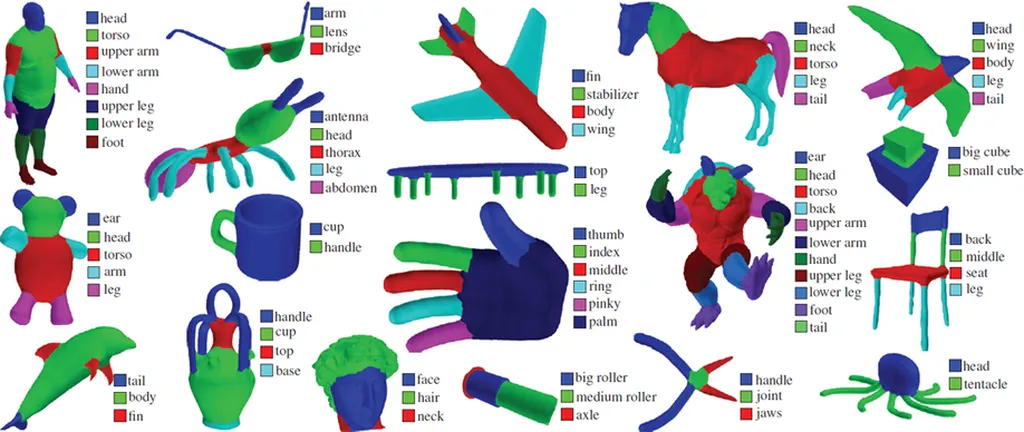In a groundbreaking development poised to revolutionize geospatial analysis, researchers have introduced a novel approach to semantic segmentation of large-scale 3D landscape meshes, with profound implications for the energy sector and beyond. The study, led by Zexian Huang from The University of Melbourne, presents the BudjBim Wall (BBW) dataset and a cutting-edge deep learning model called LMSeg, both of which promise to enhance the precision and scalability of 3D mesh segmentation.
The BBW dataset, derived from high-resolution LiDAR scans of the UNESCO World Heritage-listed Budj Bim cultural landscape in Victoria, Australia, captures intricate dry-stone wall structures often obscured by vegetation. This dataset not only supports research in underrepresented cultural heritage contexts but also provides a robust foundation for advancing 3D mesh segmentation technologies. “The BBW dataset is a game-changer,” says Huang. “It offers a unique blend of complexity and detail that challenges existing segmentation models and pushes the boundaries of what’s possible.”
Building on this dataset, Huang and his team developed LMSeg, a deep graph message-passing network designed for semantic segmentation of large-scale meshes. LMSeg employs a barycentric dual graph representation of mesh faces and introduces the Geometry Aggregation+ (GA+) module, a learnable softmax-based operator that adaptively combines neighborhood features and captures high-frequency geometric variations. This innovative approach ensures that LMSeg can accurately segment both small and irregular objects, a persistent challenge in the field.
The model’s hierarchical-local dual pooling integrates hierarchical and local geometric aggregation, balancing global context with fine-detail preservation. This dual approach allows LMSeg to excel in diverse environments, from urban landscapes to dense, occluded rural areas. “LMSeg’s ability to capture both broad and fine details is unparalleled,” explains Huang. “It opens up new possibilities for applications in cultural heritage, environmental monitoring, and urban planning.”
Experiments on three large-scale benchmarks—SUM, H3D, and BBW—demonstrated LMSeg’s superior performance. The model achieved 75.1% mIoU on SUM, 78.4% O.A. on H3D, and 62.4% mIoU on BBW, using only 2.4 million lightweight parameters. These results outperform strong point- and graph-based baselines, highlighting LMSeg’s efficiency and accuracy.
The implications for the energy sector are significant. Accurate 3D mesh segmentation can enhance the planning and monitoring of renewable energy projects, such as wind farms and solar installations, by providing detailed topographical data. It can also aid in the maintenance of energy infrastructure, ensuring that pipelines, power lines, and other critical assets are properly integrated into the landscape.
Moreover, the BBW dataset and LMSeg model offer a practical and extensible method for advancing 3D mesh segmentation in various applications. “This research is just the beginning,” says Huang. “The potential for LMSeg and similar models to transform geospatial analysis is immense. We are excited to see how this technology will shape the future of the energy sector and beyond.”
Published in the journal GIScience & Remote Sensing (translated to English as “Geographical Information Science and Remote Sensing”), this study marks a significant milestone in the field of 3D mesh segmentation. As the energy sector continues to evolve, the integration of advanced technologies like LMSeg will be crucial in meeting the challenges of a rapidly changing world.

